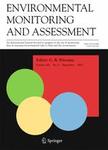版权所有:内蒙古大学图书馆 技术提供:维普资讯• 智图
内蒙古自治区呼和浩特市赛罕区大学西街235号 邮编: 010021

作者机构:Jiangsu Normal Univ Sch Geog Geomat & Planning Xuzhou 221116 Jiangsu Peoples R China Nanjing Univ Sch Geog & Oceanog Sci Nanjing 210008 Jiangsu Peoples R China Jishou Univ Coll Biol & Environm Sci Jishou 416000 Hunan Peoples R China
出 版 物:《ENVIRONMENTAL MONITORING AND ASSESSMENT》 (环境监测与评价)
年 卷 期:2019年第191卷第1期
页 面:4-4页
核心收录:
学科分类:0830[工学-环境科学与工程(可授工学、理学、农学学位)] 08[工学]
基 金:National Natural Science Foundation of China [31560130, 41401473] Natural Science Foundation of Jiangsu Province [BK20181474] Open Fund of State Key Laboratory of Remote Sensing Science [OFSLRSS201804] Priority Academic Program Development of Jiangsu Higher Education Institutions (PAPD) 2018 Jiangsu Province Graduate Research and Innovation Project [KYCX18_2157]
主 题:Habitat selection Spatial distribution prediction Rhinolophus sinicus Logistic regression model
摘 要:Habitat selection by the Chinese horseshoe bat (Rhinolophus sinicus) in the Wuling Mountains was studied in this paper. Global positioning system (GPS), remote sensing (RS) and geographic information system (GIS) technologies were used to obtain ground survey data and analyse the habitat factors driving the distribution of R. sinicus. Based on these basic data, a binary logistic regression method was used to establish habitat selection models of R. sinicus. Then, the corrected Akaike information criterion (AIC(C)) was used to screen an optimal model, and the Hosmer-Lemeshow test indicated that the optimal model has suitable goodness of fit. Finally, the optimal model was used to predict the spatial distribution of R. sinicus in the Wuling Mountains. Verification analysis showed that the overall accuracy of the model was 72.7% and that the area under the curve (AUC) value was 0.947, which indicated that the model was effective for predicting suitable habitat for R. sinicus. The model results also showed that the main factors that influenced habitat selection were slope, annual mean temperature and distances from roads, rivers and residential land. R. sinicus preferred areas far from roads and residential land and areas near rivers. Generally, higher values of slope and annual mean temperature were associated with a greater likelihood of R. sinicus presence. Therefore, the protection of the water bodies surrounding R. sinicus habitats and fully addressing the impacts of human activities on R. sinicus habitats are recommended to protect the survival and reproduction of the population.